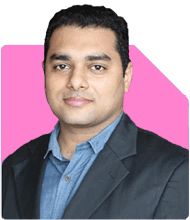Should I Invest My 2 Lakh Rupee Emergency Fund in FD or Mutual Funds?
Ramalingam Kalirajan |10924 Answers |Ask -Follow
Mutual Funds, Financial Planning Expert - Answered on Jul 23, 2024
He has an MBA in finance from the University of Madras and is a certified financial planner.
He is the director and chief financial planner at Holistic Investment, a Chennai-based firm that offers financial planning and wealth management advice.... more

Hi I have 2lakh rupee emergency fund should I do FD or should I put in mutual fund?
Fixed Deposits (FDs)
Advantages
Safety: FDs are one of the safest investment options. They provide capital protection and guaranteed returns.
Predictable Returns: You know exactly how much interest you will earn. This predictability can be comforting during emergencies.
Easy Access: FDs can be liquidated easily. Banks offer premature withdrawal options, albeit with a penalty.
Disadvantages
Low Returns: The returns on FDs are relatively low compared to other investment options. They may not keep pace with inflation.
Penalty for Early Withdrawal: If you need to access your funds before the maturity date, you may incur penalties, reducing your returns.
Taxable Interest: The interest earned on FDs is fully taxable, which can further reduce your net returns.
Mutual Funds
Advantages
Higher Returns: Mutual funds, particularly debt funds, often offer higher returns than FDs. They can help your emergency fund grow more effectively.
Liquidity: Most mutual funds allow you to redeem your units quickly. Debt funds, in particular, offer high liquidity with minimal exit loads.
Tax Efficiency: Debt funds are more tax-efficient compared to FDs. The interest from FDs is taxed annually, while mutual funds are taxed only upon redemption.
Disadvantages
Market Risk: Mutual funds are subject to market risks. The value of your investment can fluctuate, making them less secure than FDs.
Complexity: Understanding the nuances of mutual funds can be complex. It requires some level of financial literacy to make informed decisions.
Indirect Costs: While mutual funds do not have direct penalties for early withdrawal, they may have exit loads and management fees.
Professional Recommendations
Primary Consideration - Safety and Liquidity: For an emergency fund, the primary considerations are safety and liquidity. You want to ensure that your money is both accessible and safe from market volatility.
Split the Investment: Consider splitting your Rs 2 lakh emergency fund between an FD and a debt mutual fund. This way, you can benefit from the safety of an FD and the potential higher returns of a mutual fund.
Short-Term Debt Funds: If you opt for mutual funds, choose short-term debt funds or liquid funds. They are relatively low-risk and provide better returns than FDs.
Regular Plan for Mutual Funds: Opt for regular mutual fund plans through a Certified Financial Planner (CFP). Regular plans come with professional advice and help in better fund management.
Monitor and Adjust: Regularly review your emergency fund. Adjust the allocation between FDs and mutual funds based on your financial situation and market conditions.
Final Insights
Balancing safety and returns is crucial when managing your emergency fund. A mix of FDs and debt mutual funds offers a balanced approach, ensuring both security and potential growth. Always keep accessibility in mind, ensuring you can withdraw your funds swiftly during emergencies.
Best Regards,
K. Ramalingam, MBA, CFP,
Chief Financial Planner,
www.holisticinvestment.in
You may like to see similar questions and answers below
Sanjeev Govila | Answer |Ask -Follow
Financial Planner - Answered on Mar 01, 2023
Ramalingam Kalirajan |10924 Answers |Ask -Follow
Mutual Funds, Financial Planning Expert - Answered on Aug 12, 2024
Naveenn Kummar |237 Answers |Ask -Follow
Financial Planner, MF, Insurance Expert - Answered on Nov 13, 2025
Samraat Jadhav |2521 Answers |Ask -Follow
Stock Market Expert - Answered on Dec 23, 2025
Samraat Jadhav |2521 Answers |Ask -Follow
Stock Market Expert - Answered on Dec 23, 2025
Samraat Jadhav |2521 Answers |Ask -Follow
Stock Market Expert - Answered on Dec 23, 2025
Samraat Jadhav |2521 Answers |Ask -Follow
Stock Market Expert - Answered on Dec 23, 2025
Dr Nagarajan J S K |2578 Answers |Ask -Follow
NEET, Medical, Pharmacy Careers - Answered on Dec 23, 2025
Samraat Jadhav |2521 Answers |Ask -Follow
Stock Market Expert - Answered on Dec 23, 2025
Ramalingam Kalirajan |10924 Answers |Ask -Follow
Mutual Funds, Financial Planning Expert - Answered on Dec 23, 2025
Radheshyam Zanwar |6753 Answers |Ask -Follow
MHT-CET, IIT-JEE, NEET-UG Expert - Answered on Dec 23, 2025

Suggestion - (1) Better to take regular BPT admission (1st year) only in a recognized university. (2) Or choose a different safe course instead of risky lateral entry. (It is more recommended)
The final choice/decision will be yours.
Good luck.
Follow me if you receive this reply.
Radheshyam
Pl follow and like if you are satisfied with the reply.
Ravi Mittal |679 Answers |Ask -Follow
Dating, Relationships Expert - Answered on Dec 22, 2025
Ramalingam Kalirajan |10924 Answers |Ask -Follow
Mutual Funds, Financial Planning Expert - Answered on Dec 22, 2025

























